Easy Songs to Learn by Ear Guitar
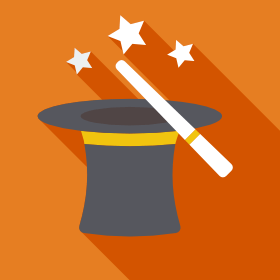
It was like magic. My guitar teacher gave the song a quick listen and BAM, reproduced it instantly. Like it was nothing. I couldn't understand how he did it.
I had some experience with figuring out riffs and other guitar parts by ear and I'd done a bunch of ear training exercises. But I was nowhere near as fast or accurate.

The way my teacher instantly knew how to instruct his fingers to play the notes he'd just heard for the first time in his life... It seemed amazing.
But like any magic trick, once you understand what's going on, it isn't as special as it once seemed. Playing by ear and learning songs by ear isn't some innate, natural talent that you either have or don't have. It's a skill that you can learn with the right kind of practice.
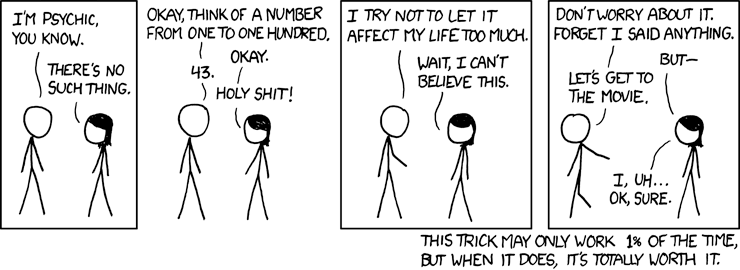
So what's the right strategy? There are countless ear training sites, apps, and books that have you practice recognising intervals, triads and seventh chords and so on. I did it all. But although it was useful, I don't think it was how my ears got to the level of my teacher. It's not how it became second nature to hear something and play it immediately.
My ears improved dramatically when I stopped using tabs, and started to use my ears all the time to figure out licks, vocal melodies, bass lines, chord progressions, stuff I heard on tv and entire songs.
Learning songs by ear is not just a great way to never ever have to visit some tab site again, navigating your way through annoying ads and sifting through incorrect tabs. It's not just a great way to avoid the boredom and tediousness that can set in after playing tabs for a while. In fact, it's vital to developing your inner music skills that help you do things like jam, improvise, write music, improve your timing, play by ear... The list goes on and on.
It's why I like to start figuring out songs by ears even with complete beginners: it's how you develop your musicality from day one. Plus, there's something extremely satisfying about having figured out a song yourself. It feels like you totally 'own' the music when you learn songs by ear.
So if you're excited about learning this awesome skill, I'll show you exactly how to learn songs by ear in this guide. The first section is focused on riffs and melodies. The second section will show you how to learn chords and harmonies by ear. Lastly, I'll tell you a bit about the courses I created to help you put in the practice you need: Make Your Ears Awesome: Kick-Starter, Make Your Ears Awesome: Riffs and Melodies and Make Your Ears Awesome: Chord Progressions. Through interactive TAB and Chord Schemes, they'll help you figure out over a hundred songs by ear.
If you're a StringKick All Access Member, these courses are all included in your membership of course!
Last thing: if you want to learn more about training your ears in general, check out this in-depth guide to ear training.
Guitarists often rush through this stage and proceed to their fretboards immediately. But if you can't hear the music in your head correctly, you will learn the song the way you think it is, rather than how it actually is. It's like building a house without carefully looking at the blueprint. You'll end up with a house, but it just won't be the one in the plans. If you can't imagine the music in your mind, you can't play it. A great way to check this is to sing, hum or whistle the music. You don't have to be a great singer. You don't even have to sing in tune. But you need to hear the music in your head.
When I learn a solo or some other longer piece, I like to listen to it for a while first. When I'm on my bike, on the train, or walking to the store... Just to take care of the memorisation. I often sing the part to check where my memory isn't strong enough yet.
Like these kids:
Once you have a rough idea of what a song sounds like, we can move on to stage 2. This stage is to is to try to find those notes on the fretboard. To translate the music into movements of your hands and into sound. Here's the step-by-step approach
Transcribing a riff or melody
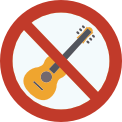
1. Put your guitar away and listen to the music
Really, don't touch that thing! Make sure you've got the melody in your head. If you've never transcribed a song before, it's probably a good idea to start with whatever you hear. This might be a guitar part, but it can also be a vocal melody or a bass line. Check if you really know the melody by humming along with the recording. Stay away from that guitar until you can hum the melody!

2. Find the very first note of the melody
In the beginning, finding the first note will be a lot of trial and error. Just think of the note you're looking for and let your hand float towards the fret that you think will give you the right note. This is an intuitive process, so don't overthink it! Is it the correct note? Is it higher? Lower? Try to slide up or down the string you're on, until you find the note you have in mind. Note: To get better at this, you can turn it into a little game. Sing a note, any note, and find it on guitar. You'll find that within a matter of days you'll get better at this. Your subconscious mind will be connecting pitches to strings and frets.

3. Write the note down
Found it? Great! Make sure to write it down. I like using tab for this, because it gives you both the note and the position on the fretboard where you're playing the note.

4. Repeat the process until you've found all the notes
Is the second note higher or lower than the first note? Or is it the same note? Try and find the second note. To make things easier, stay on one string. Just slide up or down, until you find the correct note. Once you find the, write it down and repeat the process for each note until you've found the whole riff or melody.

5. Figure out the easiest way to play it
If you've stuck to one string, the melody might be a little hard to play that way. So now it's time time to look for a way to play some of the notes on other strings too. Hint: When you go one string higher (i.e. higher in pitch and physically closer to the ground), that's the same as moving up five frets. (The only exception is when you're moving from the g string up to the b string, which is four frets). Slide back those four or five frets and you've found the exact same note!
Bonus tip: Slow it down
Sometimes, it can be a bit easier to learn songs by ear when you slow down the music a little. I use The Amazing Slow Downer or Transcribe! for this, but you can also use VLC Media Player, Audacity or Tune Transcriber which are all free. But don't slow down the music too much. As a rule of thumb, if you need to slow the tune down to more than 80 percent of the original tempo, it might be a good idea to find a song that's a bit easier. You want to find songs that are challenging but not overly so. Plus, if the music is way too fast for you to hear what's going on, it might still be a bit too fast for you to play anyway.
How do you get started?
The plan above shows you the basic steps you need to go through to figure out a song by ear. Getting better at it is simply a matter of doing. A lot. I know it can seem a little bit overwhelming if you've never done this before. But what if you set a really modest goal for yourself? Try to figure out just three or four notes a day. Within just a few weeks your skills will go through the roof.
To start practicing, I have some suggestions for some riffs and melodies that you can figure out.
- Alt-J - Breezeblocks
- The Kills Future Starts Slow
- LCD Soundsystem - Daft Punk is Playing at My House
These are all songs you'll learn in my course Make Your Ears Awesome: Kick-Starter. It makes things easier by providing note-by-note help for each song you figure out.
Let me show you how. Grab your guitar right now and we'll get started by figuring out this next riff by ear.
Hope figuring out that riff went well for you! If you want some more practice with note-by-note help, check out Make Your Ears Awesome: Kick-Starter. This course will help you figure out 24 songs by ear, exactly like this! Here's what one student said about it:
"I am a typical self-taught-youtube-era kinda guitar player. So I always avoided transcribing by ear and just googled tabs. And when I did try to transcribe by ear I was quickly lost and frustrated... Your courses are just right for my situation because they provide good song examples and useful hints. So keep it up, I really like your stuff!"
Anne, from Germany
Try the first couple of lessons of Make Your Ears Awesome: Kickstarter for free by getting the sample course:
Get the Free Lessons
Maybe you want a bit more challenge. I so here are some more song suggestions for you, ordered roughly from easier to more challenging.
- The Strokes - New York City Cops
- The White Stripes - Seven Nation Army
- MGMT - Kids
- Red Hot Chili Peppers - Otherside
- Queen - Another One Bites the Dust
You'll learn all of these songs in my course Make Your Ears Awesome: Riffs and Melodies. This course is a step up from Make Your Ears Awesome-Kickstarter. Instead of giving you help with each note, I'll let you fill in the entire riff on your own. You can then check which notes you got right! Check it out with this song by The Strokes:
Listen closely to the riff and then grab your guitar to figure out the very first note. Next, fill out that note in this interactive tab and hit the 'check tab' button to see if you got the first note right. (It will turn green or red depending on if you got it right.)
Got that first note right? Keep going and see if can get the entire riff right!
If you enjoy this way of learning songs by ear, check out my ear training course: Make Your Ears Awesome: Riffs and Melodies. The course will help you learn 51 riffs and melodies exactly like this. You can also try the first couple of songs for free as part of the sample course. It includes a song by the White Stripes and one by the Red Hot Chili Peppers.
Get the Free Lessons
Hey, but what about chords and chord progressions? How would you go about learning those by ear? Keep reading! That's what we'll explore in the next section!
It makes sense. Figuring out a single note is simply easier than hearing and recognising a collection of notes. It can be a bit overwhelming to learn chords by ear, but learning really isn't as 'impossible' as some guitar players feel it is.
Just like figuring out riffs or melodies by ear, learning chords by ear is not some innate ability that you either have or don't have. Recognising chords by ear is a skill you'll learn with practice. All you need to do is stay calm, don't panic, and go at this one step at a time.
This section will give you a step-by-step guide that shows you exactly what to do. I'll also show you how you can use music theory to make the process of learning chords and harmonies by ear easier. Lastly, I'll list some suggestions for different songs you can learn by ear, grouped by difficulty level.
Why learn chords and harmonies by ear?
When you figure out songs by ear, your relationship to sound changes. You're not trying to match a bunch of symbols (whether tab or notes) to sound. You're listening to the sound first, processing it, and figuring out a way to reproduce it. And that skill of reproducing a sound that you hear in your head forms the core of your musicianship.
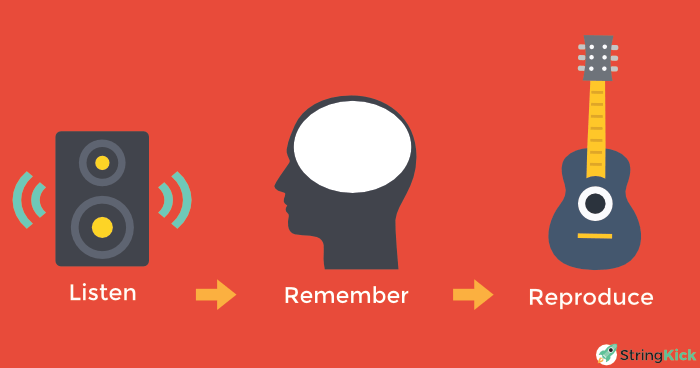
Figuring out a song by ear ingrains the sound in your 'musical system' in a way that's much deeper than when you're just copying a tab. You'll deepen your understanding of what's going on in the music. Having more insight into harmony is the key to writing more compelling songs and playing more meaningful solos. Harmony is the emotional tapestry of music that can make or break a song.
What you need to know
To learn a melody by ear, you don't need any theoretical knowledge. After all, you really just need to match a pitch you hear to a fret on your guitar neck. Of course, knowing theory can make playing by ear easier at some point, but you definitely don't need it to get started.
For transcribing chords and chord progressions, this is a bit different. You need to know how to play the chords that you're trying to figure out. So, obviously, the more chords you can play, the better. But to make this guide simple and actionable for everyone, I'll provide a list of songs you can get started with in three 'levels':
- Level 1: You know all the open chords
- Level 2: You also know how to play major and minor chords in all keys
- Level 3: You also know how to play various seventh chords in all keys
Side note: to learn all the open chords along with a couple dozen song examples, check out Guitar Chord Bootcamp: Open Chords. If you want to be able to play all the songs in level 2 and level 3, check out my course Guitar Chord Bootcamp: Barre and Beyond. You'll cement the 96 most used chords into your brain, from major and minor chords to dominant, major seven, minor seven, diminished and half-diminished chords.
You're probably also wondering: do I need to know music theory to learn chords by ear? If you know hardly any theory but know your chords, you can still get started using the guide to learning harmonies by ear below. However, theory really does make learning chords by ear much easier, because you'll roughly know what to expect. You'll know which chords are 'normal'. I'll show you which theory is helpful, right after this step-by-step approach to learning chords by ear.
Step-by-step approach to learning chord progressions by ear
What you need to know:
- Practically no theory
- How to play all open chords or more (level 1-3)
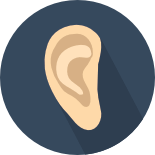
1. Tune into the bass
The lowest note in music determines how all the other notes above it will sound. Harmony always starts with the bass note. So, the first thing you want to do, is listen closely and tune into the bass line. This may take some practice, because we're used to listening to melodies that are easy to hear.

Bonus tip: use an equalizer
If you're using a program like iTunes or VLC media player you can try boosting the bass frequencies using the equaliser. This can make it a bit easier to tune into the sound. It really depends on the recording, but generally speaking it should help to boost anywhere from 60 up to 400 hertz. So look around that area until you find a setting that makes the bass easier to hear. Also, keep in mind that earbuds or laptop speakers often don't have the most powerful low end. So trying a different pair of headphones or speakers might also make it easier to tune into the bass.
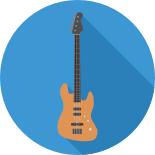
2. Figure out the bass part
Next, figure out what the bass is playing, note for note. It might be a single note that is repeated or it might be a more melodic line. This process is pretty similar to learning riffs and melodies by ear (click here to scroll to that section). Most importantly: make sure you've got the bass line in your head and that you can sing or hum it first. Next, figure it out one note at a time, until you've found the first five to ten seconds of the song.
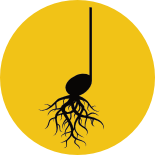
3. Figure out the root note
The root note is the 'letter' we use to name a chord. So the root note for a B minor chord is B. Think of it as the foundation of a chord. The next step is to listen to the bass line and figure out which note is the root. The bass line won't usually play the root note all the time, but it will emphasise it. For example, listen to which note the bass plays on 'the 1' (i.e. the start of a new measure). Listen to which note the bass plays the longest. On which note does the bass sound the most 'at rest'? Whenever the harmony seems to change, you'll notice that the bass is emphasising a different note.

4. Check if the chord on the root note is major or minor (or neither)
Say you found the first root note is G. Try playing a G major chord and a G minor. Listen to which one sounds correct. Roughly speaking, you can say that major chords sound happy, and minor chords sound sad. In time, you won't have to try both, because you'll hear immediately if a chord is major or minor. But figuring out chords like this is the best way I know to learn to recognise these sounds.
If these 'standard' major and minor chords sound wrong, you might've run into a chord that's constructed a bit differently. If you know how chords are constructed, I highly recommend using the detective approach I've laid out below. You can also check if one these chord types sounds better:
a. half diminished chord
b. diminished chord
c. augmented chord
d. sus chord (sus2, sus4, or both)
e. a slash chord (i.e. a chord where the bass isn't playing the root note, but probably the third or fifth)

5. Check if you need to add an extra note to make it into a seventh chord
If you found a major or minor chord in step 4 (i.e. not one of the exceptions I mentioned), the sound might still be a bit different. This is most likely because the chord has one or more additional notes that give it a richer sound. The first options to check: a. dominant chord b. major seven chord c. minor seven chord d. major minor seven chord
Keep repeating these five steps and you'll be able to figure out the most common chord progressions. You're basically 'trying out' the most common possibilities. Of course, after a while you'll come to know these sounds better and better, making your 'guesses' more and more educated. You'll start to recognise common progressions.
How to start learning chords and chord progressions by ear
Let's dive straight in and figure out a song by ear right now! Don't worry, I'll take you through it step by step, chord by chord. Start by listening to the first 20 seconds of this Nick Cave song. Try to pay extra attention to the bass guitar.
Take another listen, and try to really focus on the bass guitar. Notice that up until 0:18 it only plays two different notes. It starts at 0:04 with one note, then switches to the second at 0:11, before returning to the first note at 0:15. Find those two notes, and you've found the two chords in this song! The chords you can pick from are: E, A and D. Fill out and check your answers below.
Note that I've added 'repeat' to the second bar. This means you need to fill in the same chord as in the previous bar.
If you enjoyed this exercise, be sure to check out my course Make Your Ears Awesome: Chord Progressions. It takes you through a total of 57 songs, so you get better and better at figuring out songs by ear. It's part of your membership if you're a StringKick All Access Member of course. Not a member yet? You can check out the first couple of songs for free. Enroll in the sample course by clicking the button below!
Get the Free Lessons
"You can get as many or as few hints as you want. It's almost like working with a teacher. I really like it."
Nick
To give you some more help, here are some suggestions for songs you can get started with, depending on your chord knowledge. Songs with clear bass lines that are (relatively) easy to hear.
Level 1: I know how to play all open chords
- Nick Cave - Death is Not the End
- Outkast - Hey Ya!
- REM - Everybody Hurts (except the bridge)
Level 2: I know how to play major and minor chords in all keys
- Bob Marley - Jammin'
- Radiohead - Creep
- Arctic Monkeys - Cornerstone
Level 3: I know how to play major, minor and seventh chords in all keys
- Otis Redding - Sittin' on the Dock of the Bay
- Queen - Don't Stop Me Now
- Jack Johnson - Sitting, Waiting, Wishing
The step-by-step plan I've outlined above is the place I'd recommend anyone start when they want to figure out chord progressions by ear. It's vital that you pick up the skill of listening to a recording and finding those sounds on your fretboard. After you're reasonably comfortable doing that, it also makes sense to start using music theory to make more sense of the sounds you're hearing. That's what the following two approaches are all about! (Don't know a lot about theory yet? Check out Music Theory From Scratch.)
The detective approach

What you need to know:
- How chords are constructed
- How to play as many chords as possible (see levels)
Think of yourself as a detective. You look for the smallest details that might help solve the case. Every single note you find is clue bringing you closer to the right answer. After finding the root note, listen for another note. Any note that you hear... Whether it's played by the guitar, piano, violin or in the vocals. They're all creating the harmony and give you valuable information on which chord is being played. To give an example:
The bass guitar is playing an E. And you hear a violin playing a B, sliding down to a G. This tells you the root note will probably be an E. The violin is first playing a B, i.e. the fifth. Then it slides down to a G, which is the minor third. That tells you that this chord will be some sort of E minor chord. Next, let's say you then notice the piano alternating between an F# and a D. Those notes are the minor seventh and the ninth. Putting all this knowledge together, tells you that you're hearing an E minor nine chord.
This approach is especially effective when you just can't seem to find a chord that sounds 'right'. That often means you're not dealing with a 'standard' major or minor chord, but one of the exceptions mentioned in step 4 above.
The Architect Approach
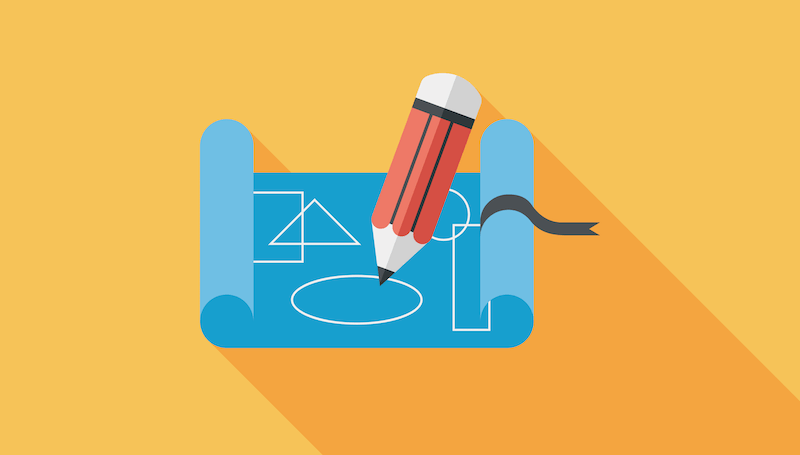
What you need to know:
- The major scale and natural minor scale
- How to play major and minor chords in all keys (level 2)
- Preferably also how to play seventh chords in all keys (level 3)
Some chords sound better together than others. There's a logic to it that you can use to 'predict' which chords are most likely to be used. The general rule: chords sound good together when they're constructed out of notes from the same scale. It makes them sound like they belong together. To keep this lesson focused, I won't explain the inner workings of this here (check out Music Theory From Scratch for that), but I'll show you how to use it.
1. Find the key of the song
You can find the key of the song, by looking for the chord where the song sounds 'at rest'. Which chord doesn't sound like it needs to 'go somewhere else' to resolve? The first things to check: what's the first chord and what's the last chord of the song?
2. Write down the scale of the song's key
If the chord you found in step 1 is major, write down the notes in the major scale. If it's a minor chord, write down the notes of the (natural) minor scale (i.e. aeolian).
3. Build a chord on each note of the scale and write the name down.
There's a set formula for which chord to construct on every 'scale degree' (i.e. each note of the scale). Here it is:

Using this chart, write down the chord for every note in the scale.
Firstly, this tells you which notes you can 'expect' the bass to play. This list also gives you the chords you're most likely to run into. For example, when you're in the key of C and the bass plays a D, you can guess it will probably be a D minor.
Be sure to play around with these chords a bit and listen to them. Hear how all the chords seem to 'belong' together? That sound is called 'diatonic'. It means that the chords are all built from the same scale. But you'll also run into chord progressions that break these rules. So, listen to what happens when you use chords that are 'wrong' in the sense that they don't fit within this theory. For example, try playing an F minor chord or an A flat chord when you're in C major. Or when playing in C minor, play an F chord or a Db chord. The chords are called non-diatonic because they don't 'fit' within the key (which is why they sound more dramatic and awesome).
But what's always bugged me is that I had a bunch of advice, but couldn't help people develop these skills, like I did in private guitar lessons. So that's why I got to work and started creating courses to help you put in the practice to develop your ears. Here are some of the things people have said about them:
"The best I've seen for ear training by far."
- Michael, from the UK
"Now, when I listen to music I can hear different things then I could before. It's like listening to a new song. That really gave that feeling 'hey, the training really works'. That was awesome."
- Mads
"Your courses are exactly the way I think guitar should be taught."
- Eli, from California
By now, I've created three 'Make Your Ears Awesome' courses. By becoming an All Access Pass Member, you'll get access to all of them, as well as two other courses I've created. Find out more about joining StringKick here.
Let me tell you a bit more about each of these courses!
Make Your Ears Awesome: Kick-Starter
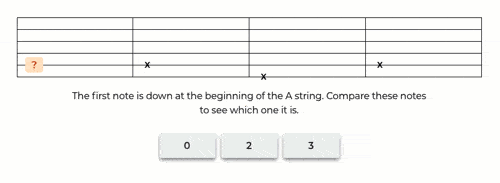
Make Your Ears Awesome: Kick-Starter is the best place to get started with ear training. It helps you figure out 24 songs by ear with note-by-note help and instructions. Try the first couple of songs for free by enrolling in the sample course!
Get the Free Lessons
Make Your Ears Awesome: Riffs and Melodies
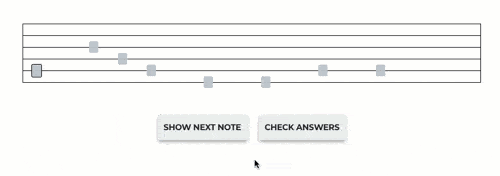
This course is a bit more challenging than the one above. It also helps you figure out riffs and melodies by ear, but it's a bit more challenging. The songs gradually become a bit tougher and you'll figure out the whole thing on your own, before you get feedback. Of course, you can re-check your answer as often as you like. And you can always get some help: just hit the 'show first note' button or the 'show next note' button. With this course you'll put in a ton of focused practice in a short amount of time: 51 songs to be exact.
Try the first couple of songs for free by enrolling in the sample course.
Get the Free Lessons
Make Your Ears Awesome: Chord Progressions
The third course is called Make Your Ears Awesome: Chord Progressions. It's similar to the ones above, except it's all focused on figuring out chord progressions by ear. You'll go through 57 songs with the help of my detailed notes and instructions for each song as well as this interactive chord progression tool:
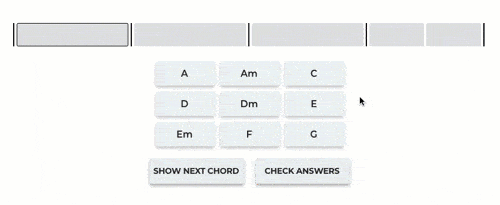
Like the other courses, you can check out the first couple of lessons to see if you like it. Hit the button below to try it!
Get the Free Lessons
CONCLUSION
Get started!
Developing your ear will take your musicianship to the next level. It's a great feeling when looking up a tab seems needlessly complicated and time-consuming. By figuring things out yourself, you'll also gain a much deeper understanding of the song at hand, and music in general. You'll also be able to learn anything without needing a tab, which is great if you're into more obscure bands, video game music, or want to learn that one b-side that no one seems to like, but you know is pure genius...
In the long-term, your playing will become more natural, because you're strengthening the connection between your head and your hands. Between your musical imagination and your fretboard. It'll become easier to play by ear and you'll get better at playing what you hear in your head and expressing your ideas.
I hope this guide has been helpful and has gotten you excited about learning songs by ear! It's incredibly rewarding, so trust me when I say it's worth the initial learning curve. If there's one thing I'd recommend to most guitar students (myself included), it would be to train their ears every day. It might seem like a huge project to tackle. But if you just spend 10 or 20 minutes every day figuring out some riff or melody, you'll see that your skills improve dramatically within a few weeks. In short, the most important thing is got get started!
If you're interested, don't forget to check out my course Make Your Ears Awesome: Kick-Starter that helps you learn songs by ear using interactive guitar TAB or Make Your Ears Awesome: Chord Progressions which does the same for chords.
Want to know more about ear training? Check out Ear Training: The Ultimate Guide. It's an in-depth guide that explains why ear training is important, the three core skills it will help you develop and which exercises are the most effective.
Lastly, if you need any help learning songs by ear or if this article can be clearer or better in any way, please don't hesitate to let me know! Simply email me: just(at)stringkick.com!
Source: https://www.stringkick.com/blog-lessons/learn-songs-riffs-melodies-by-ear/
0 Response to "Easy Songs to Learn by Ear Guitar"
إرسال تعليق